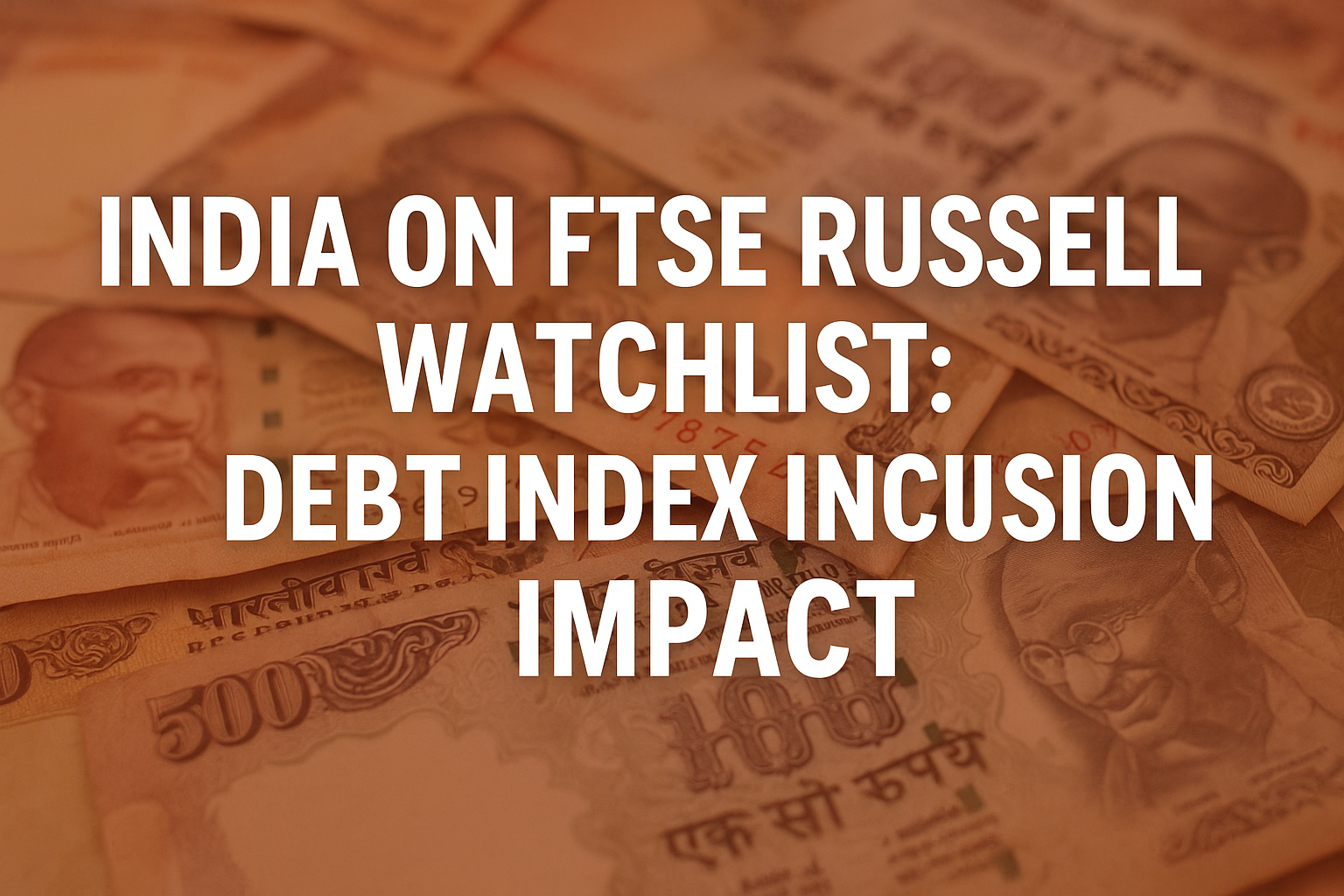Announcement: Lorem ipsum dolor sit amet, consectetur adipiscing elit. Donec et quam blandit odio sodales pharetra.
Including Indian debt in global indices is the first big step
During the week, FTSE Russell said that it had put India on the watch-list for possible inclusion in its debt market indices. What will be the impact?

Table of Content
Lobbying for some time now
With the big shift to passive investing the world over, index service providers are suddenly the go-to people in the market. India has been lobbying with the likes of MSCI, JP Morgan and FTSE Russell for the last 2 years for possible inclusion of Indian G-Secs in the global bond indices. While MSCI and JPM have not given a commitment, FTSE Russell is the first debt index provider to confirm that it was evaluating India. But why is this inclusion in global debt indices so important for India?
Repeating equity story in debt
If India attracted $30 billion of FPI flows into equities in FY21, the big reason has been passive fund flows. Global index fund giants like Blackrock and Vanguard manage over $11 trillion and they move their monies based on passive index inclusion approach. India is already part of MSCI Emerging Market equity indices and that has triggered huge flows into equities over the years. The wager is that if a similar inclusion happens in debt, nearly $10 billion could flow into Indian G-Secs which will largely negate the real-yield related debt outflows of $16 billion that India saw since the start of 2020. But there are roadblocks too.
Why index providers are wary?
It beats your imagination as to why the index providers have been cagey about including India in debt indices while Indian equities had been present in indices for a long time? Firstly, index provides have been a little wary of tax aspects, especially the retrospective tax that has become quite controversial. Secondly, index inclusion is normally contingent on the depth and breadth of the debt markets and JPM expressed the fear that the G-Sec markets are still dominated by banks. Lastly, currency stability and free convertibility is one more issue that has been holding up the inclusion of Indian paper in debt indices.
Flows would work both ways
One risk of inclusion in debt indices is that it makes Indian paper vulnerable to shifts in global real yields. For example, if inflation goes up and the real yields are unattractive vis-à-vis other markets, then it could lead to heavy outflows. Today, Indian debt only attracts active flows and passive flows tend to be a lot more bunched in nature. Hence the real impact of passive debt outflows on local bond yields and the INR could be a lot sharper. It would also mean that Indian monetary policy will have to be aligned to global monetary policies to avoid the risk of bunched outflows. It must be said that inclusion in debt indices is a good start for sure. But the downside risks cannot be entirely ignored!
Comments